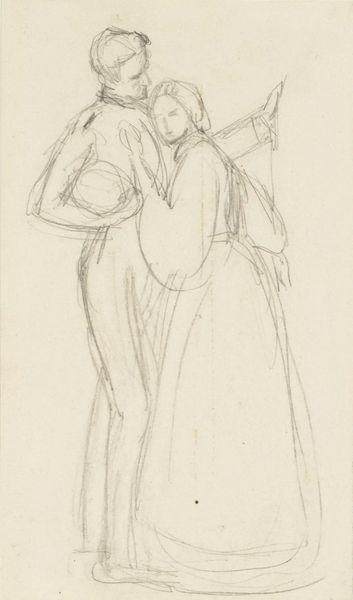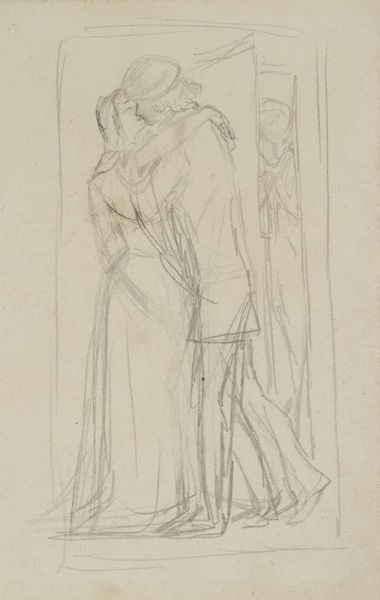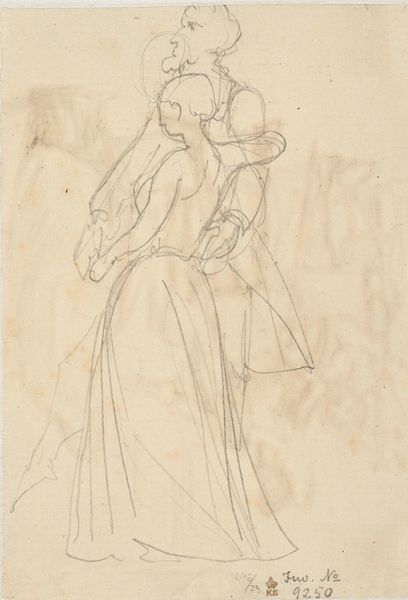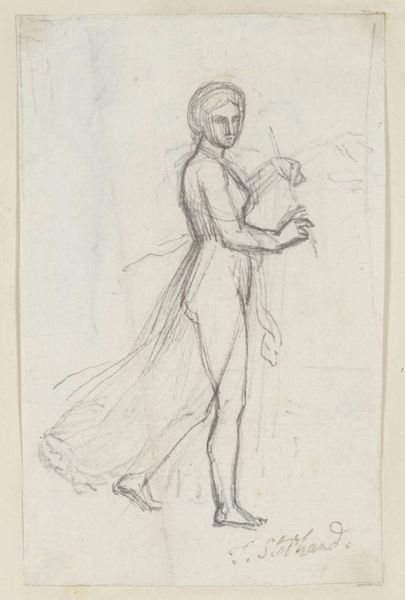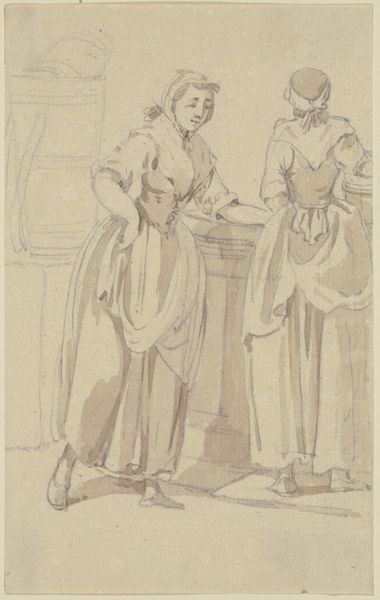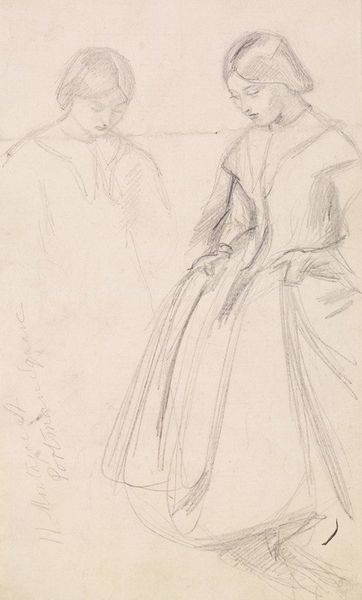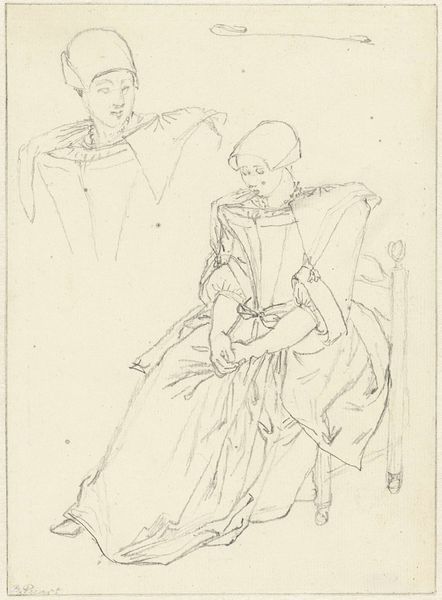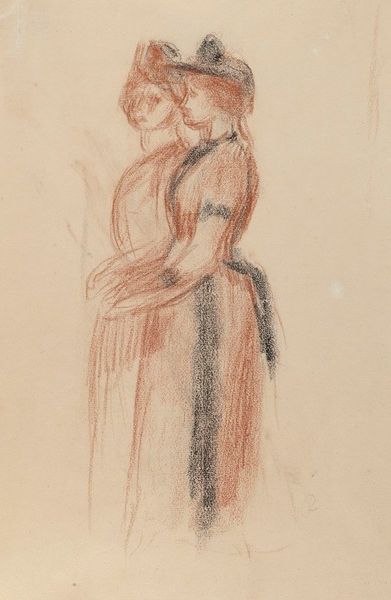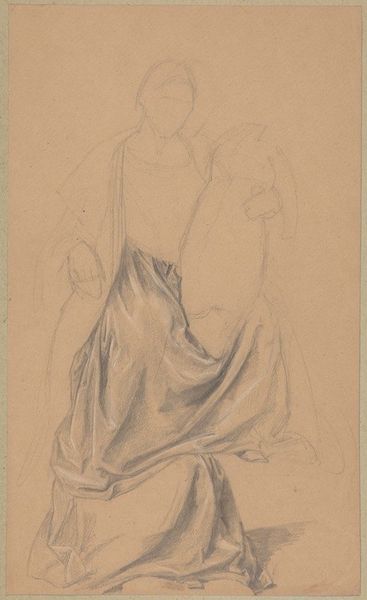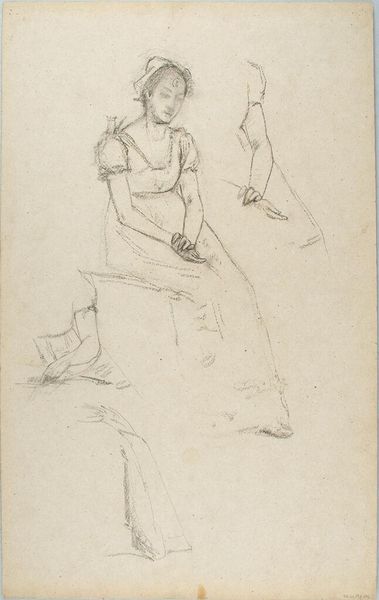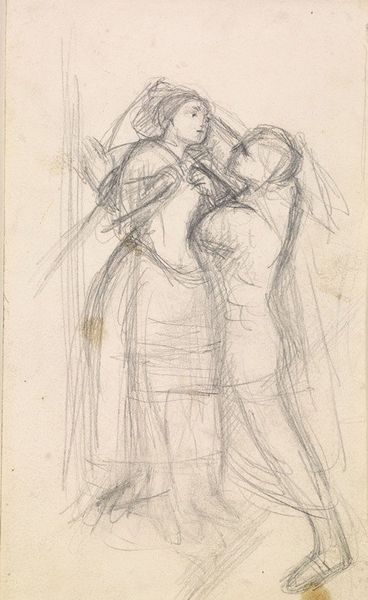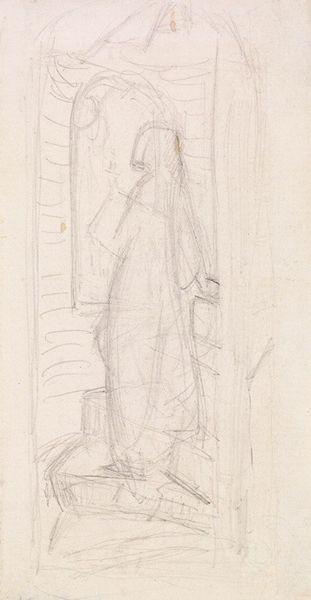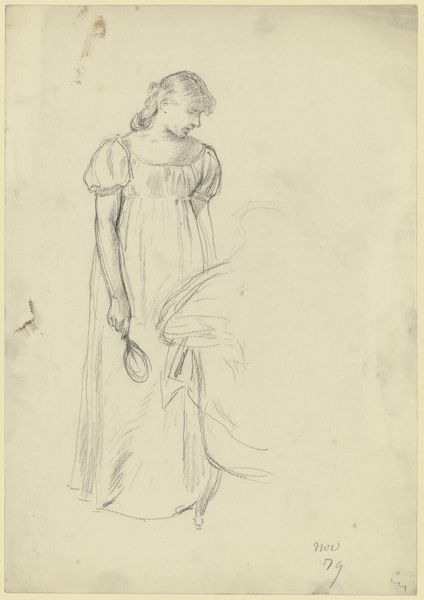
Study for ‘Madeline and Porphyro Escaping from the Castle’ for the Right-hand Panel of ‘The Eve of St Agnes’. Verso: ?Study for ‘The Seed of David’ by D.G. Rossetti c. 1856
0:00
0:00
Dimensions: support: 180 x 224 mm
Copyright: CC-BY-NC-ND 4.0 DEED, Photo: Tate
Curator: Arthur Hughes, born in 1832, sketched this preparatory study titled "Study for 'Madeline and Porphyro Escaping from the Castle'" on 180 x 224 mm support. It captures a pivotal moment from Keats’ poem. Editor: There’s a tentative, almost dreamlike quality to the sketch—the figures are spectral. It really emphasizes the vulnerability of their escape. Curator: Indeed. Consider how the artist uses line. The delicate, almost frantic strokes convey movement and tension, reflecting the precariousness of their situation. This supports the final painting’s composition. Editor: It's impossible to ignore how Hughes uses this sketch to position Madeline in relation to Porphyro, and question the power dynamics at play. Is this the escape she envisioned, or is she being led? Curator: That tension is palpable here, rendered through the considered placement of each figure within the pictorial space. Editor: It leaves us with much to consider. Curator: Precisely. A fascinating glimpse into the artist’s process.
Comments
tate 7 months ago
⋮
http://www.tate.org.uk/art/artworks/hughes-study-for-madeline-and-porphyro-escaping-from-the-castle-for-the-right-hand-panel-t06884
Join the conversation
Join millions of artists and users on Artera today and experience the ultimate creative platform.
tate 7 months ago
⋮
This sketch is an early study for the right-hand panel of Hughes's triptych, The Eve of St Agnes (Tate Gallery N04604), based on Keats's poem of the same name. It shows the lovers Madeline and Porphyro escaping from the castle. A good example of Hughes's vigorous drawing style, it is also characteristic of a rather angular style of drawing which was practised by other Pre-Raphaelites. Also on the recto side of the sheet are a number of other slight sketches by Hughes which possibly relate to The Eve of St Agnes. Hughes's early thought was to place Madeline in the foreground of the composition, omitting the drunken servant and the dog who bar the lovers' passage. The importance Hughes accords Madeline in this sketch was clearly intended to balance the weight given to the figure of Porphyro in the left-hand panel, and so give the triptych a balancing symmetry. In the finished picture Hughes responds more nearly to the sentiment of Keats's poem. Madeline merges more into the background, grasping Porphyro's arm, alarmed at the sight of the servant and dog. An alternate study for the same panel is also in the Tate's collection (Tate Gallery T07284).A bold pencil study on the verso of the sheet relates to the centre panel of Dante Gabriel Rossetti's large triptych The Seed of David of 1858-64 (Llandaff Cathedral, Wales). On the basis of this knowledge, and on stylistic grounds, this sketch has been attributed to Rossetti. The finished watercolour study for the Llandaff triptych is in the Tate (Tate Gallery A00842-44) and is dated to c.1856. Hughes and Rossetti shared a studio at this time and it is quite possible that Rossetti appropriated the blank back of one of Hughes's sketches in order to record an early thought for his most important commission to date. Further reading:Timothy Hilton, The Pre-Raphaelites, London 1970, pp.113-15Leonard Roberts, introduction by Stephen Wildman, Arthur Hughes: His Life and Works, a Catalogue Raisonné, Woodbridge, Suffolk [to be published 1997]Terry RiggsNovember 1997
